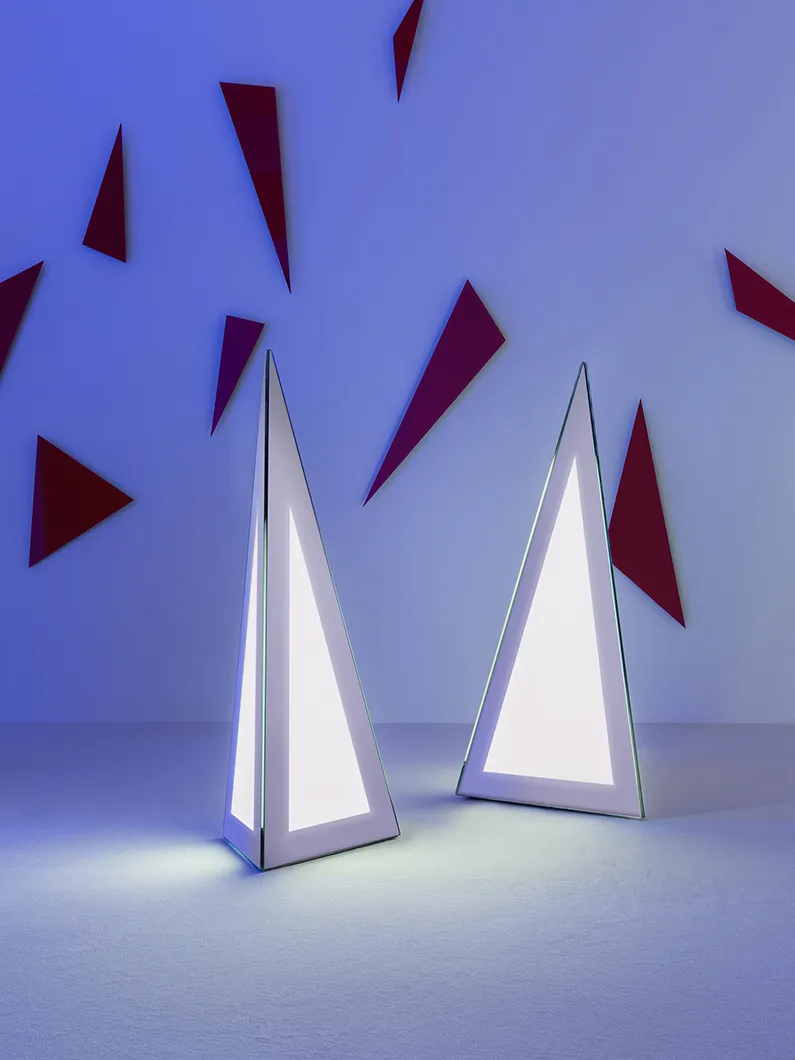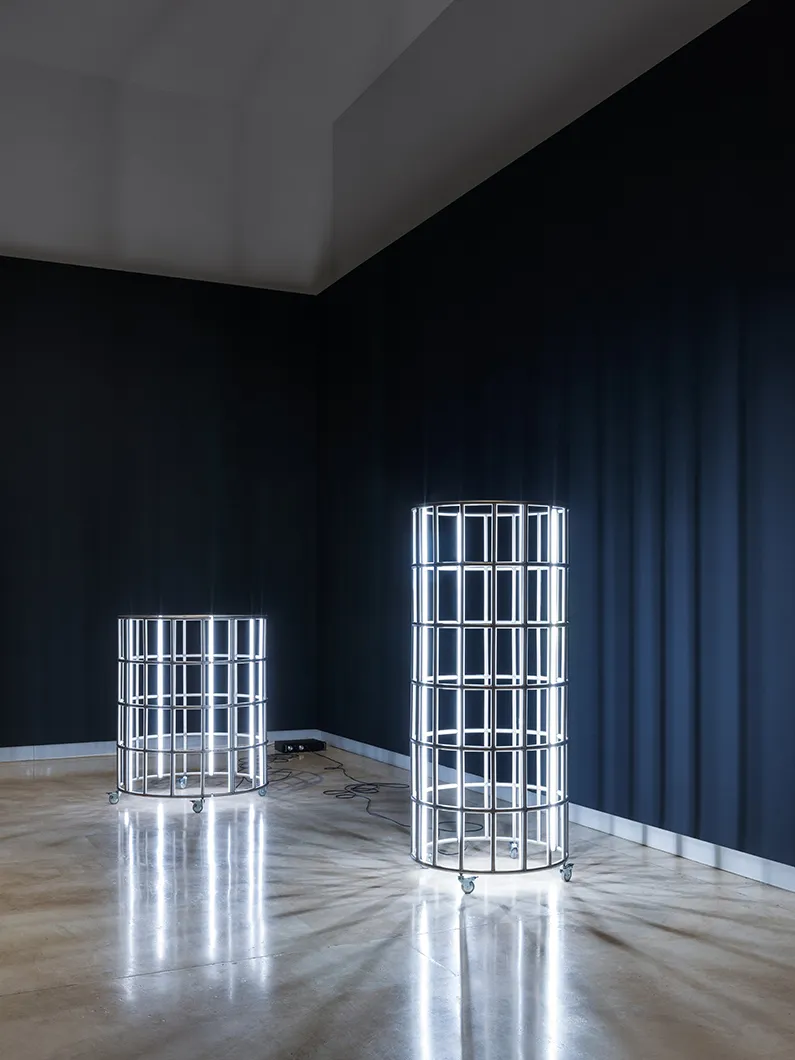In partnership with MiCodmc, a selection of establishments ripe for discovery during the 63rd edition of the Salone del Mobile.Milano, from 8th to 13th April
The floor goes to Sarah Cosulich and Stefano Collicelli Cagol and the architect Alessandro Bava

Lydia Silvestri, installation view, 2020 Art Quadriennale FUORI, courtesy Fondazione La Quadriennale di Roma, photo DSL Studio
With the name FUORI – meaning “out” – one of the most relevant art exhibitions in Italy of the last few months is coming to a close. The protagonists of the project tell us how it came to be and summarise its impact.
After months of restrictions and closures, the social scene seems to have reverted back to “normality", and with the reopening of the museums, Rome's Palazzo delle Esposizioni also springs back to life with the Quadriennale d'arte. The curators of the exhibition, Sarah Cosulich and Stefano Collicelli Cagol, share their point of view: from the staging of the exhibition, to expectations about the future of art and the emerging generations of artists, to the response from the public. Architect Alessandro Bava, on the other hand, revisits the concept of space within the Palazzo, outlining his contribution to the project.
Cosulich: We believe that FUORI can be interpreted by the public as a word that can encapsulate the complexity and importance of a project like the Quadriennale d'arte 2020. FUORI is a mantra for us, a howl, a longing for the public space that we have had to give up over the last year, and it sums up our desire as curators to present an alternative vision of Italian art from the 1960s to the present. Multidisciplinarity and expressive research reflecting on feminine, feminist and queer dimensions find ample space in the exhibition.
Collicelli Cagol: FUORI is also a tribute to the first national association for gay rights, founded in the 1970s. This is an important statement at a time when civil rights are under discussion, when the country is rallying in support of the Zan bill which legislates against homo-transphobia and misogyny.
Cosulich: For the first time in its history, the Fondazione Quadriennale di Roma has appointed an Artistic Director and a curator, called upon to develop projects to map Italian art and promote it abroad. The two projects were launched in 2018, two years before the exhibition opened, and they were vital to its development. Named Q-Rated and Q-International, the first is made up of three workshops per year held in six different cities in Italy (Rome, Lecce, Turin, Milan, Nuoro, Naples) open to artists, curators, with links to Italy aged between 23 and 35, with international guests as tutors.
Collicelli Cagol: The second project, Q-International, is a fund to help foreign institutions to exhibit Italian artists in their countries. This incentive has allowed us to effectively support Italian art beyond our national borders and to gain a certain familiarity with what is being focused on abroad at the moment.

Valerio Nicolai, installation view, 2020 Art Quadriennale FUORI, courtesy Fondazione La Quadriennale di Roma, photo DSL Studio
Cosulich: The decision to present more female artists than male artists was deliberate, specifically to give visibility to outstanding figures who have not yet been given the place they deserve in the history of Italian art and the Quadriennale.
Collicelli Cagol: This was the first edition in which females were widely represented and the feminine was called into question thanks to the works presented. We gave space to imagery that conveys the plurality of Italian and global society.
Cosulich: Young people pay great attention to the art that came before them, on the one hand with a critical eye, and on the other to seek out stories, imagery and experiences they feel an affinity for.
Collicelli Cagol: This is the logic we used to retrace the last sixty years of the production of imagery in Italy. Many young people will find artists as interested as they are in crossing over into other disciplines or assimilating them into their work, in a game of attraction and repulsion.

2020 Art Quadriennale FUORI, installation view. In the foreground, Micol Assaël; on the wall, Irma Blank, courtesy Fondazione La Quadriennale di Roma, photo DSL Studio
Cosulich: We expect an intensification of attention and support for the younger generations, a strengthening of research into digital as a creative and exhibition platform. The pandemic, despite the difficulties, has seen an upsurge of initiatives in Italy, such as the creation of AWI - Art Workers Italia, the non-profit association that is structuring a series of discussions and events for the formalisation of the profession of those working in the arts.
Collicelli Cagol: The Rome Quadrennial highlights the existence of generations of artists, something vital to carrying out more complex historical research. There are energies in the country that need to be supported so that artists can increase their visibility at an international level too.
Cosulich: We are noticing a great hunger for exhibitions and cultural events; in particular, Quadriennale d'arte 2020 FUORI is enjoying a great following among both the trade and general public. There are works made with the most diverse media such as painting, sculpture, drawing, photography, installations, and inspired by different disciplines such as architecture, design, fashion, cinema, theatre, music and dance.
Collicelli Cagol: These are works that not only allow us to reflect on Italian history and its contradictions, but they also immerse visitors to the exhibition in fantastical, visionary worlds. Nourishing bodies and senses through art seems more urgent and important than ever, and museums and institutions play a fundamental role in this respect.

Diego Marcon, video still, 2020 Art Quadriennale FUORI, courtesy Fondazione La Quadriennale di Roma, photo DSL Studio
Bava I could summarise my contribution with the formula Punk Classicism. I have returned to Italy after 12 years in London and America, so it was very stimulating to give this symbolic place for Italian culture and history a new light that was both mimetic and desecrating.
Bava We did battle over the taboo of natural light against the strict and outdated academic categorisations of Italian museography. However, it was interesting for me to work against this formula from the inside. The most stimulating aspect of the project was certainly rethinking the spaces through the artists' contributions.

2020 Art Quadriennale FUORI, the facade of the Palazzo delle Esposizioni, exhibition venue, courtesy Fondazione La Quadriennale di Roma, photo DSL Studio
Bava I think that the Palazzo is objectively more beautiful, the exhibition spaces are more appealing and the visiting experience is both enriched and intelligible. For me, it was important that an exhibition that ambitiously attempts to rewrite the history of 20th-century art from female, feminist, homosexual and trans-disciplinary practices be not only beautiful and cognitively stimulating, but also welcoming to wander through.
Bava I have started a new course at the Bartlett School of Architecture in London, where we are experimenting with the use of artificial intelligence in design. Also, I am working on the conversion of a wartime construction at the Port of Naples, which will be transformed into a space for contemporary arts in the Mediterranean, and on a project for a non-profit cultural institution in Barcelona.

In memoriam: David Lynch
The American director has left us at the age of 78. The Salone del Mobile.Milano had the honor of working with him during its 62nd edition, hosting his immersive installation titled “A Thinking Room”. An extraordinary journey into the depths of the mind and feelings. His vision will continue to be a source of inspiration.



























